Brought to Europe from the Persian province of Khorasan as early as the beginning of the 16th century, these cute animals quickly became favorites in the houses of the nobility and titled persons, the most famous being the French Cardinal Richelieu and the British Queen Victoria, who built a real castle for their pets. True, Persian cat of those times little resembled modern, except that thick long hair.
Persian cat
The breed standards were formed until 1970.
At one time they were badly spoiled by American lovers of the Persians, who did not care much about the selection rules and sacrificed quality for the sake of fashion. And only relatively recently the scientists managed to bring out a healthy breed of Persian cats without defects.
 Breed with a snub nose
Breed with a snub nose Now Persian cats are divided into two main types - the first is characterized by the smoothness of the lines, the second is extreme (with a snub nose).
Breed standards: keep your nose to the wind
The Persian nose is precisely the distinguishing feature of the breed, according to which the standard is determined. According to international standards, Persian cats are divided into three types:
- Classic (second name - British) - now considered to be obsolete. Muzzle such Persians are very similar to ordinary cats due to the fact that their nose is slightly below the eyes and pointing straight;
- Modern (or short-nosed) - the lower eyelid of the eye and the upper edge of the nose are approximately on the same level;
- Extreme (or American) - the nose is located high, approximately at the level of the inner corners of the eyes and it seems "snub-nosed".
Other signs by which at first glance you can determine that before you a noble Persian cat:
- A massive muscular body;
- Thick silky coat, which can reach a length of up to 12 cm;
- Large round shining wide-set eyes, very intelligent and expressive;
- Round head and densely pubescent ears;
- Fluffy and not long tail with a slightly rounded tip.
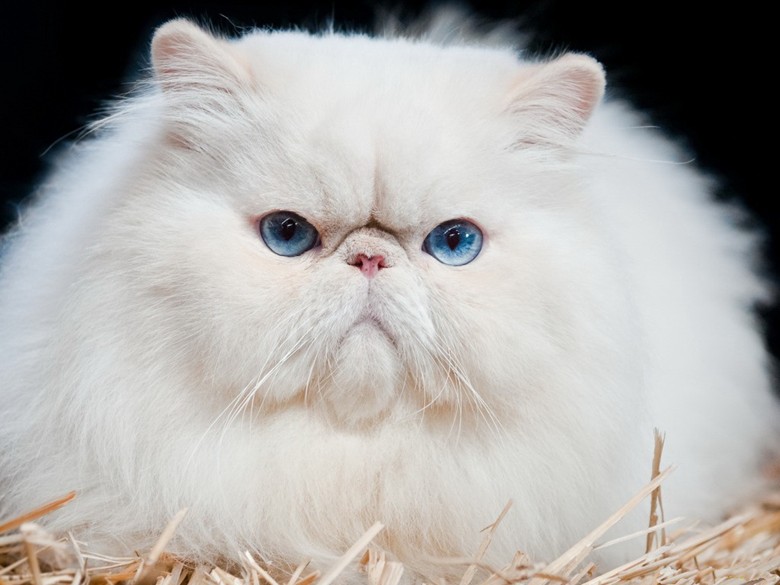 Persistent "Persian" view
Persistent "Persian" view And also a collar of wool and "panties" on hind legs, bunches of wool between fingers, round, like a cheek ... A Persian cat is hard not to recognize. And if you ask a casual passer-by to name the breeds of cats that are known to him, then be sure, the Persian will be if not in the first place, then in the top three.
Color of wool
The first Persian cats' coat was of two colors: white and blue. The most rare were the black Persians. However, now you can choose a pet of any color, even purple, smoky, striped or tortoiseshell.
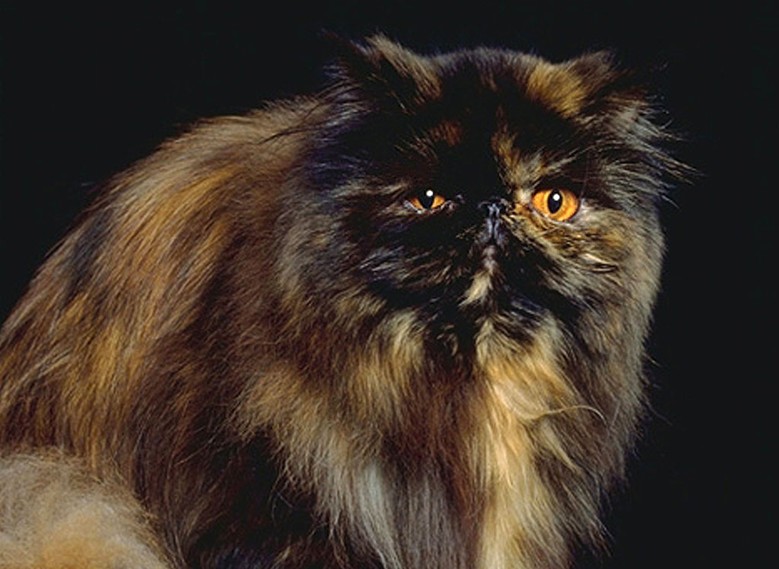 Pearl of tortoiseshell color
Pearl of tortoiseshell color The rarest and most unpopular is the red (orange) color. This is due to the fact that to get a kitten of an orange Persian you need an orange mom and dad. In this case, it is high probability to get a kitten with other residual colors on the muzzle and paws.
 Offended representative of the "orange"
Offended representative of the "orange" The noses of such kittens are longer than those of their other brethren, and the eyes are not so expressive. Although the Persian cat, whose photo above, does not agree with us ...
Character: we debunk the myths about the "tarnished" reputation
Whatever the color of the Persian cat, you will get yourself a loyal, calm and good friend. Persian kittens are cute fluffy balls that will not leave indifferent even the sullen and unsociable person.
Contrary to popular belief that this breed is not solitary, Persian cats are very fond of a society of people. Moreover, it is practically the only breed that can not live without a human being and dies in the natural environment. Have you ever seen a wandering Persian? Here we are not. And it's not only about their value, but also their inability to live outside the family.
There is a common opinion about the uncomfortable nature of these cats. Allegedly they are rancorous, intractable, stupid and horribly lazy. Often this opinion is formed on the perception of the appearance of the animal: a massive body, round eyes, gloomy appearance. But go to any forum and read the reviews of the owners of animals, and you will understand that all of the above - idle fictions! You will be surprised when you learn that the Persian is an ideal breed for a family in which children live. They are not bully, kind, playful enough during adulthood and youth, they gladly go on their hands and give themselves to pat.
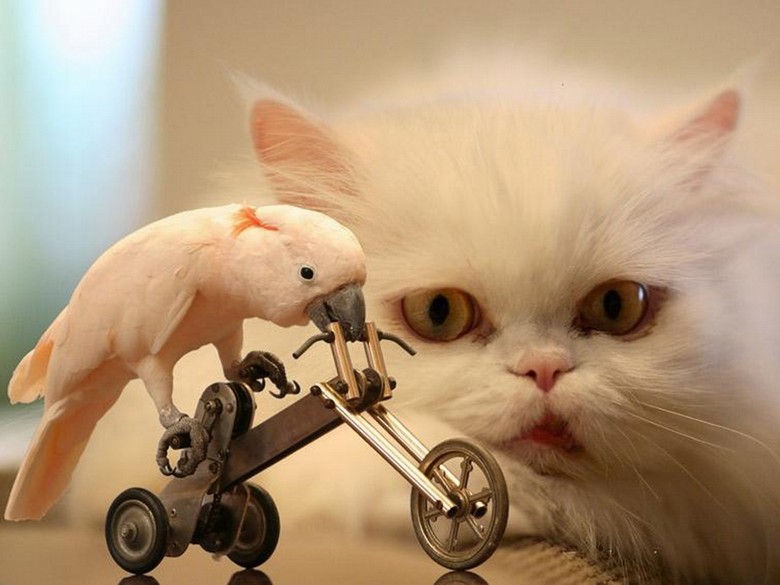 Persian breed is very friendly
Persian breed is very friendly They rarely meow, but it's not laziness, but a good upbringing and "blue blood". They perfectly coexist with dogs and do not see prey in other of your smaller pets: you can be calm for your or hamster. True, at first they may well be beating your guests, but you also do not embrace the first counter, why should a cat do it?
Care and maintenance: the Persian master can not be lazy
Many owners go to the kennel of Persian cats, flattered to a beautiful photo on the Internet. But you have to be honest with yourself: if you are lazy - the Persians are not for you. A long shiny thin coat is a merit not only of a cat. Representatives of this breed are very clean, they constantly lick their fur, but they themselves can not cope.
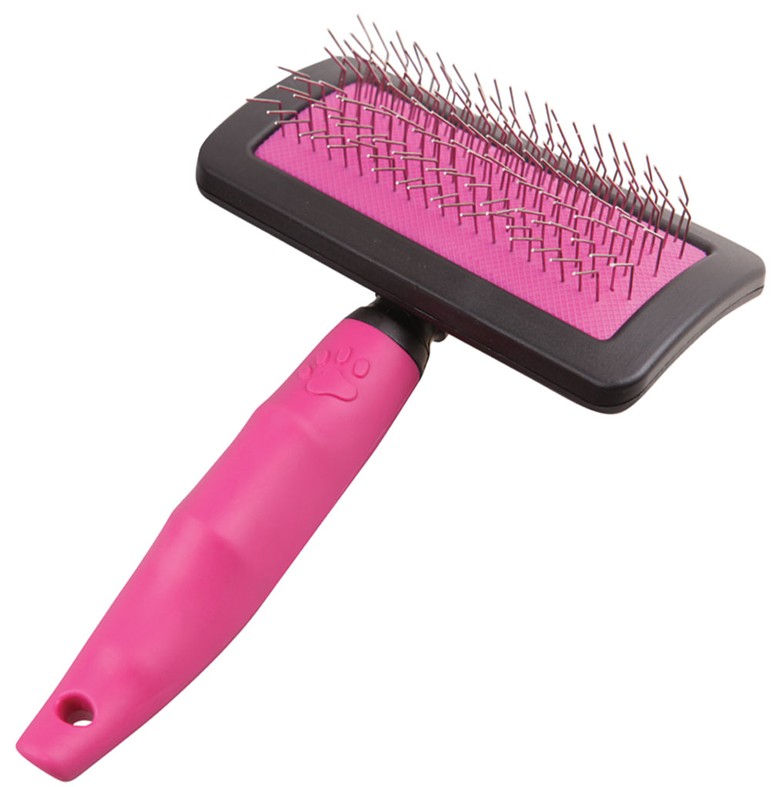 Special puerper
Special puerper A diligent master must comb out his pet every day, otherwise the wool will collapse into ugly koltuns, which you can not get rid of except for haircuts. Therefore, you need to acquire a quality comb and talc (powder for wool).
In addition, such animals need bathing at least once a month. And you have to accept the fact that this procedure does not like the Persians. They are still cats.
 Persian already guesses what awaits him
Persian already guesses what awaits him Be sure to get special pills or paste in order to make it easier for the cat to get rid of swallowed while licking the wool.
Buy a vacuum cleaner. Even if you are a fan of light and air and there are no carpets in your house, then you must have sofas, armchairs and chairs. The wool of Persian cats is truly beautiful, but it is unlikely to look on the couch as elegantly as on the cat itself.
Cat food
Learn to eat right. Or learn with the cat. Like any other living creature, the Persian breed of cats needs a balanced diet:
- Meat and fish. Meat any, except chicken, fish only boiled;
- Dairy products and eggs. Do not drink milk - do not spoil, offer kefir. Eggs are also better to cook;
- Cereals and vegetables;
- Porridge can be mixed with minced meat or liver;
- Fats and oils. You will be surprised to what extent cats love olive oil.
However, you can buy in pet stores special balls - cats are very fond of licking them.
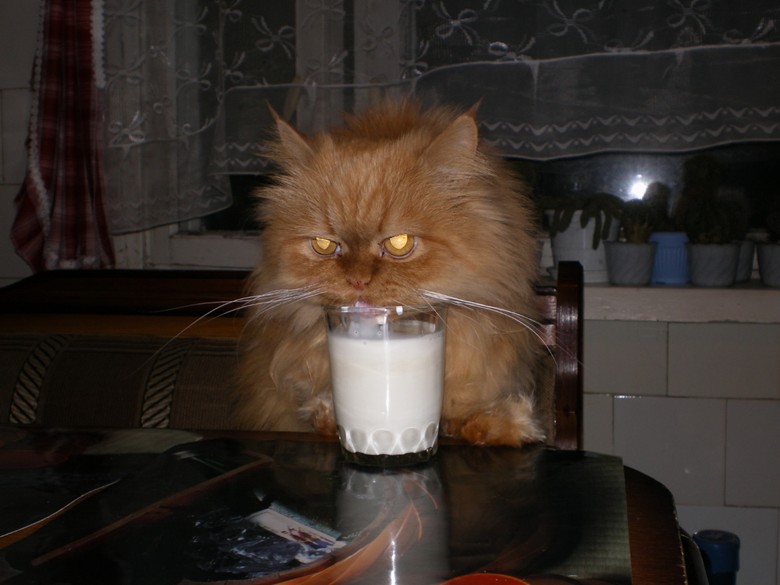 The cat wanted milk
The cat wanted milk Well, and most importantly, what you need to know. Persian cats in great need of love. Be with your pet patient and caring, and you will see how they respond to your affection.
And remember - we are responsible for those who have tamed!
Persian cat - a noble breed
If you find an error in the text, then select this section with the mouse and click Shift + Enter or . Thank you!
Persian cats - a kind of breed and complex. They have a special disposition, which not everyone is able to appreciate. What are they?
History of the breed
According to the official version, in the 17th century Persian cats with very long hair were brought to Italy from Persia. After a short time, similar cats were brought from Angora to France.
Only in the 19th century in England began to conduct serious work with the imported cats, thus singling out two independent breeds: Persian and Angora. In the Soviet Union, this breed appeared only in the 80s of the 20th century.She was brought from Europe by diplomats and was very rare at first.
Standards, species and photos
Ideally, the Persian is pretty with a thick long hair (up to 15 cm). The coat is thin, light, has a silky texture. On the shoulders and chest forms a magnificent collar, on the hind legs - panties.
Color can be different. Individuals with markings on the paws, tail and head are isolated in a special color-color-point.
The body of the Persians is massive, muscular. Chest and abdomen are rounded, shoulders and back are powerful. Paws short, strong, thick. The tail is thick, blunt at the tip or slightly rounded.
The head is massive, proportional to the body. The forehead is bulging, the cheeks are full. Neck short and thick.
By standard, the harmonious head of the Persians:
- Short small nose with a wide back. It should be slightly upturned and have wide openings.
- Powerful, developed chin; wide, strong jaws.
- The ears are wide and slightly inclined forward. They should have a triangular shape and be slightly rounded at the ends. Bunches of wool are located in the shells.
- Widely set round expressive eyes. They should not water and be bulging. The look is calm. Superciliary arches are well marked.
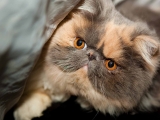
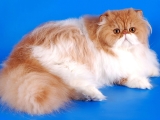


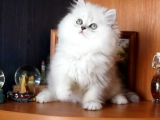
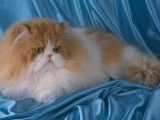
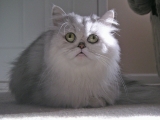
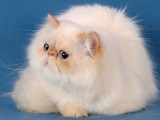
At the moment, 4 types of this breed are officially recognized:
- Classical. The nape of the nose is 5-6 mm below the lower eyelid line.
- Modern. The nose is at the same level as the lower eyelid line.
- Extreme. The nose is at the same level as the inner corners of the eyes.
- "Piggy" or pig. The nose of the nose is above the upper eyelid. The forehead is weakly expressed, the general skeleton of the body is weak.
Color standards
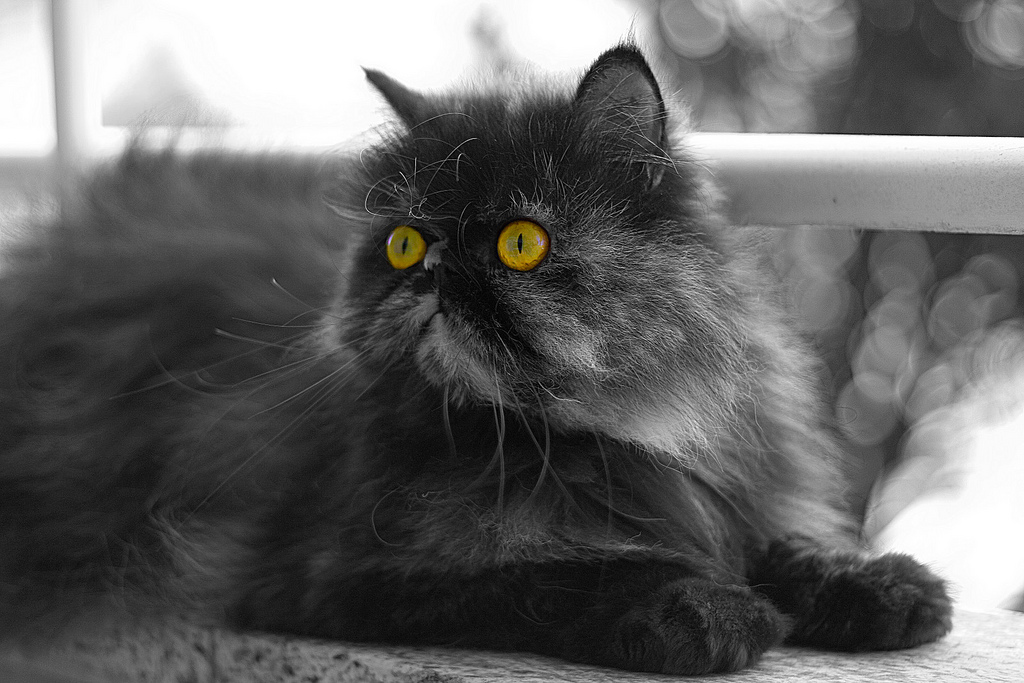
Persian breed of cats, color set
Traditional colors of Persians include solid colors and their combinations with white spots:
- Color of the main tones.
- Color of smoky tones. The undercoat of such individuals is white, and the eyes are orange and shiny.
- Tortie color: blue cream, chocolate cream, red with black. The pattern in such individuals is formed by two-color spots. Eyes - orange, under the chin and nose - a bright color accent.
- Shaded colors: silver chinchilla, golden and silvery cameo. The color of the eyes in such species is usually orange, in silvery - blue-green, in golden - from green to brown.
- Colors of their stripes and spots (tabby). Eye color - orange.
- Solid color with white spots (bicolor). The color of eyes in such individuals differs from copper to orange.
- Siamese color. Such individuals are also called Himalayan, they have blue eyes.
Nature of the breed
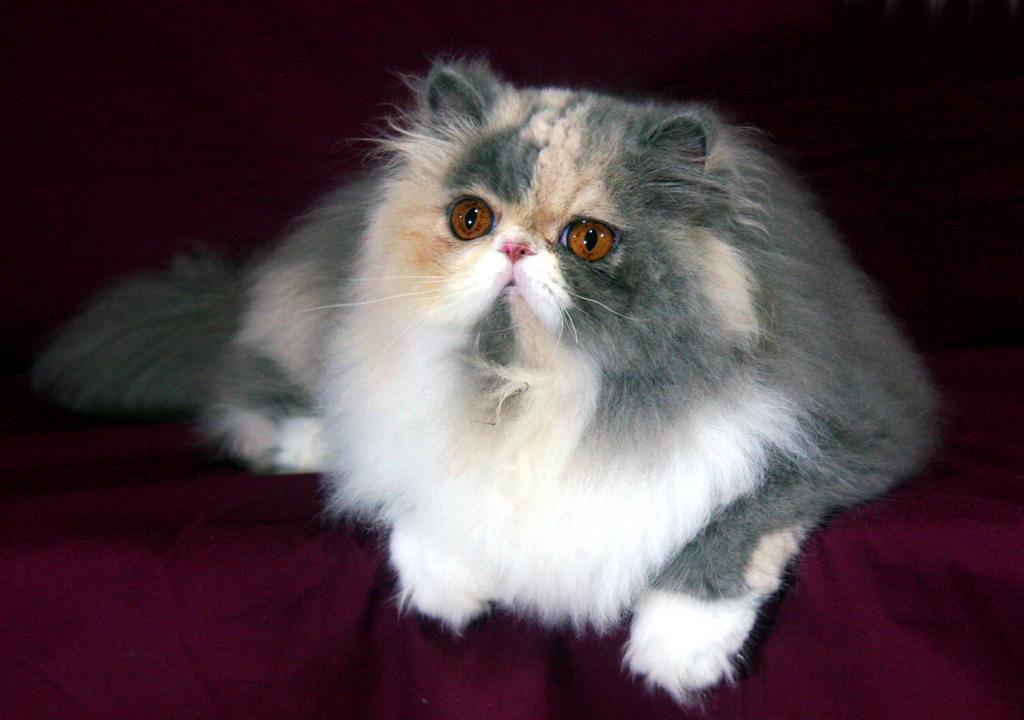
A photo. Persian cat
Persians - animals are friendly, affectionate and calm. They are inactive, not particularly curious. But they like to play, and sometimes they find such activity, so beware!
Persians do not like to impose themselves and show their disposition only to someone who they really like. Taking effective poses, they allow you to admire yourself, but very much dislike when their peace is broken.
Also they are very clever and cunning. Owners note that these animals are prone to simulation, for example, lameness, to attract attention.
The Persians are very attached to man. In the absence of the owner patiently waiting for him, and as soon as they hear the approach of a person, they begin to actively spin at the feet and try to climb their hands.
They perfectly feel the owner, they are able to empathize with him. Because of their sensitive nature, they can even fall into depression and take over nervous disorders. On such days they need maximum attention and care.
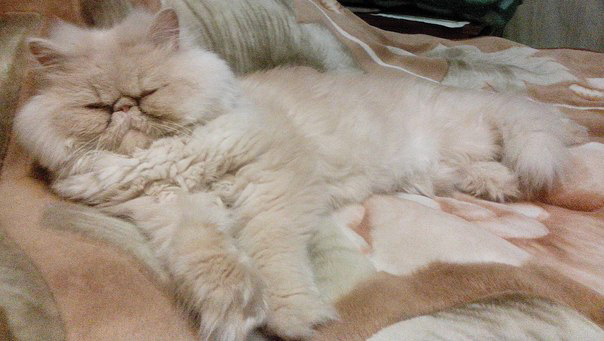
Care for the fur of Persian cats need a daily
Persian cats are complex in content. Behind their smart wool you need daily care.From the fact, in what it is, depends on the emotional state of your pet.
This breed may have watery eyes, so be ready to clean them. Often check your ears, gums, nose and claws.
The toilet needs to be washed every day - these are very fastidious creations.
Persians until the old age remain kittens, with them you need to play often.
Since these are very domestic cats, you should not let them out into the street.
What to feed the Persians
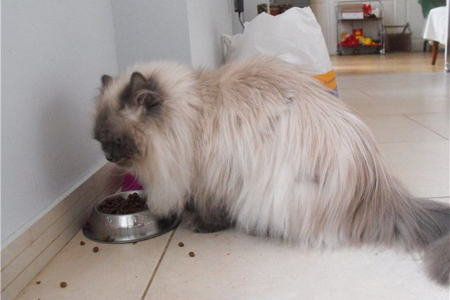
To feed this breed of cats is necessary for premium food.
Persian cats need both meat and vegetable food. The main part (40%) should be proteins: meat, eggs, cheese.
Meat (beef, lamb, game) is better to pre-boil. Do not forget about garnish from porridge, greens. From fatty pork is better to refuse - it can badly affect the liver.
Persians are very useful inproducts: liver, kidneys, lungs, which must be given in raw form.
Also it is necessary to accustom them to soup with the removed fat.
Fish Persians are given not more than 2 times a week.
To your pet was healthy, you need to give him food without seasonings and spices. Human food does not suit him.
As a balanced food, suitable ready-made feeds, which already have everything you need. But remember that it will be safe only.
Food should be given in a flat dish, otherwise it is inconvenient to eat.
Persians eat a little, but often - up to 20 times a day. Portions should be small.
Diseases of the Persians
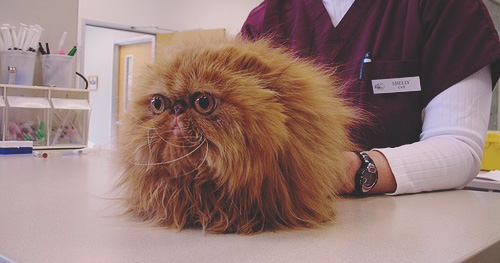
Persian cats by nature have good and strong health
In general, Persian cats are quite healthy and there are no special problems with them. But some species suffer from hereditary disease - polycystic kidney disease and less often - from blindness.
Also there are problems with the teeth - they often form a plaque, there is a tendency to gingivitis. Dental examination is mandatory.
The Persians are very poor in transport. They become nervous, breathing becomes more difficult. Especially hard is the exotic species.
A healthy Persian is a calm animal with even breathing, a moist nose and a shiny fur. He has a good appetite, regularly goes to the toilet.
If anxiety symptoms are found (fever, rales in the chest, coughing, abundant discharge from the nose and eyes), you should immediately take the animal to the clinic.
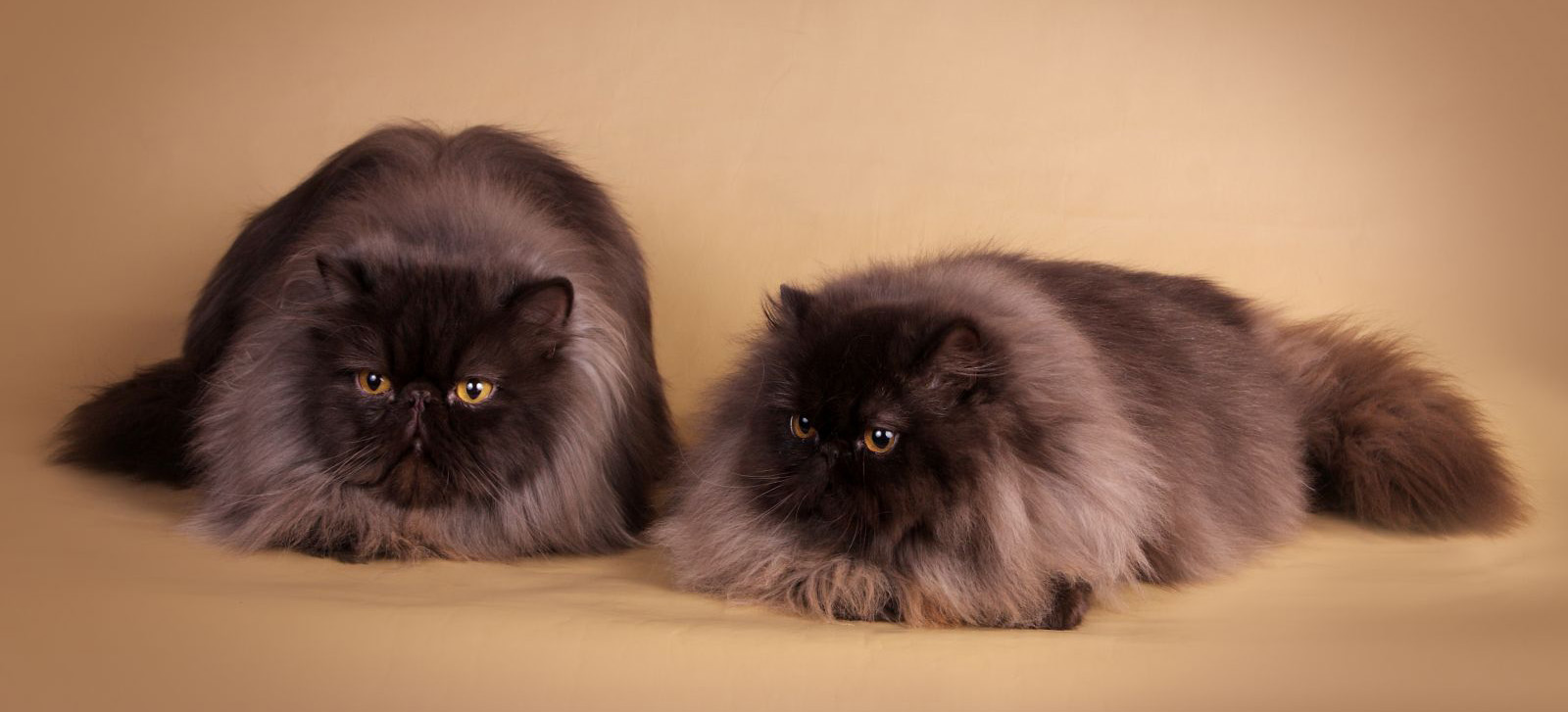
Breeding this breed is fairly simple
When choosing a partner for breeding, it is worth paying attention to the birth signs. A cat must have a good family tree.
There are cases when, when crossing the "best with the best", offspring are born with defects. Especially it concerns cats-extremals.
If there is no way to work with the ideal partner, knit with a compensating method. Choose a male, the disadvantages of which are different from the disadvantages of the female.
Breeding Persians is not particularly difficult. The estrus in cats happens about 4 times a year and the behavior at this time does not differ from the behavior of other breeds.
Persians are difficult to cope with the birth and care of babies without a human being. In general, they are very affectionate and caring mothers.
Pros and cons of the breed
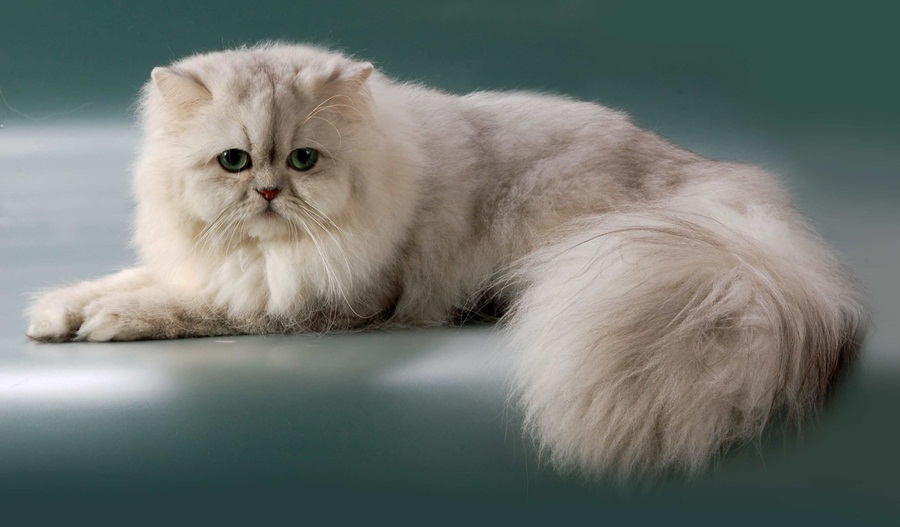
This breed is very difficult to care for
By cons are:
- difficulty in care;
- the constant attention of the person is necessary;
- peculiar traits of character;
- predisposition to certain diseases.
Pros:
- beautiful aristocratic breed;
- very affectionate and calm character;
- ability to empathize with the owner, sensitivity.
Where and how to buy a Persian kitten
A kitten can be bought in the nursery of Moscow:
- http://www.lumicat.ru
- http://cat-brilliant.narod.ru
- http://snow-dreams.ru
St. Petersburg:
- http://www.sir-cheesmoor.com
- http://silverspell.narod.ru
You can also buy a baby at an exhibition or in a special club in your city.
Kittens "from the hands" stand from 1500 rubles, from the nursery - from 4000 r. An important role will be played by the presence, absence of a pedigree and defects.
When buying a kitten should be carefully examined:
- pass along the back of the hand - the spine should not stand out;
- the animal should not often itch, shake its head, cough;
- check your ears, eyes, nose;
- healthy baby should be mobile, walk with your head up;
- the kitten should not be too small, the optimal age is from 2.5 months;
If you purchased the animal from the breeder, he must give you a registration card with a seal and signatures. It contains assessments of experts, pedigrees and titles of parents, the address of the club to which he belongs.
Origin of the breed: Middle Asia
Features of Persian cats: long hair, strong attachment to the owner, quiet and conquering temper.
 |
Persian cats and cats - charming, like a toy, with a characteristic flattened face and a rich fur coat. The beauty of these cats, the main component of which is a long thick fur, gentle calm disposition and extreme attachment to the owner allow the animal to firmly hold the top positions in the rating of pets. Another distinguishing feature of Persian cats - they are quite silent and do not like to simply air the air with a meow. But pomurlykat, climbing on his knees, chest or even the neck of the owner - a sweet thing.
Persian is one of the most socially oriented feline breeds. They are relentlessly ready to follow the owner from the room into the room, if only he would pay attention to them. Choosing the most affectionate and loving kitten, many people stop at the cat, hoping for a more complaisant compared to representatives of the masculine gender nature. In the Persians, this is completely wrong. The Persian cat is much more affectionate and more affectionate to the owner than an independent cat. Although both are extremely curious and playful even in adulthood. An adult Persian will chase a paper mouse with the same excitement and energy as a kitten.
Video presentation of the breed:
Description
Persian cat, perhaps, the only cat, on whose breed there are simultaneously three standards: Old English, modern European and American, it is also extreme. The main difference between these standards is the shape and location of the nose. The Old English standard requires the location of the respiratory system slightly below the eyes, with its direct shape, as in other breeds. The modern European standard involves finding the upper edge of the nose of the nose at the level of the lower eyelid. In Persian cats, the extremities of the nose are tucked up even further, to the level of the inner corners of the eyes. In all other respects, the standards converge. A Persian cat should have a dense, stocky body on thick short legs, a round head and a fairly short tail. The bright distinction of the Persian breed is an unusually long, soft and fluffy coat. Pile of wool reaches a length of 15cm. This despite the fact that the animal itself is medium in size and has a maximum mass of up to 7 kg. There are a lot of varieties of color of Persian cats, the most common among which are blue, white, red and tortoiseshell.
How many live Persian cats? On average, 10-15 years.
The nature of Persian cats
 |
The main feature of the Persian cat's character is his attachment to the owner. The cat is ready to devote all its time to the owner, but in return requires the same. Communicating with Persian is a great way to relieve a depressed mood and daytime fatigue. The animal is so attached to the person that it is ready to play the role of a living warmer in his bed. Not receiving proper attention, a Persian cat can itself become depressed and suffer deeply. It should also be noted that the Persian is a purely domestic creature. Having fallen into the street, to the influence of which they are completely unadapted, animals die very quickly.
Caring for a Persian cat
 |
In addition, the Persian cat - one of the most demanding for daily care breeds. The longest coat of an animal requires, of course, the greatest attention. That she always looked not just neat, but great, you need to comb such wealth to half an hour a day. It is necessary to not once carry out the procedure, and on the wool cover there may well be confusion and koltuny, very difficult to remove. By the way, bald spots on the place of combed coots are considered a serious drawback at the cat shows.
Daily brushing care of the Persian cat is not limited. Wool requires the regular application of expensive special care products. In addition to taking care of the fur, it is necessary to look daily at the eyes and ears of the pet, because these organs often become inflamed in Persians.
At the present time a wide variety of cat breeds has been identified. And even if the choice of animals is now very large, long-haired cats of Persian breed do not lose their popularity and with the years remain all the same desired.
History of the appearance of the breed

The Persian breed of cats has been known to mankind for more than 500 years. The first mention of it dates back to 1620. Navigator Petro della Vella delivered the first representatives of furry cats to Italy from distant Iran (formerly Persia). Further, the progenitors of the modern Persian breed came to England, where it was called the French cat.
A Persian cat, known to us today, appeared in the litter of kittens from an English breeder in the 1920s. The kitten was more profitable than its counterparts. He had a beautiful body, strong shortened paws, a short nose and a long coat of good quality. It was with him began a thorough work on the breed. Now there are two varieties of Persian:
- extreme;
- classical.
What does a Persian cat look like? The photo will help to understand the difference between this breed and others.
Around the middle of the last century, work was carried out to improve the breed and, possibly, the introduction of a new one. The result was the appearance of an exotic cat with a very short nose and short stuffed wool.
Persian cats description of the breed

Persians have a number of distinctive features:
- a thick coat with a dense undercoat and a long coarse hair;
- a round large head proportional to the body;
- short straight ears;
- full cheeks and broad cheekbones;
- a broad, snub nose can be almost completely pressed into the skull;
- wide open round and large eyes;
- truncated massive paws;
- truncated fluffy tail, blunt at the tip.
Behavior Persians

Persian cat, whose character does not differ submission is still a favorite of millions of people. Many representatives of the breed do not need to lie on their knees. They prefer to enjoy their beauty, rather than being a tame pet.
However, these are quite playful animals, ready to take part in any entertainments. A distinctive feature of nature can also be called excessive tenderness and affection. Persian cats do not tolerate prolonged loneliness and prefer a permanent host company.
What Persian cat is in care?

If it was decided to purchase this breed, it is worth being prepared for the fact that there are some difficulties:
- Thick coat requires careful and daily care. It is necessary every day to take care of the animal's hair with special brushes and combs. In addition, you will need to buy special shampoos to care for long hair.
- Permanent separation from the eyes should be wiped with napkins to care for the eyes or special lotions.
- Because of the specific structure of the skull, most of the breed's species have difficulty breathing. This also requires constant monitoring of the animal.
- Once a week, it is necessary to clean the ears of the animal from dirt.
Diseases of the representatives of the breed

Representatives of the Persian breed are more likely than others to have the following pathologies:
- retinal atrophy;
- increased lacrimation;
- labored breathing;
- kidney failure;
- urolithiasis disease;
- heart disease, especially hypertrophic cardiomyopathy.
Therefore, deciding to get a Persian, it is worth considering all these factors and responsibly approaching the choice of a kitten. Find the right quality feed, and find a good veterinarian. It is worth remembering that these animals are not good for transportation. And from the description of the Persian cat it is clear that it requires more careful care than other of its brethren.
Nevertheless, the Persian breed of cats, photos of which are presented in the article - is a great favorite, which is worthy of attention. The animal will bring a sea of warmth and tenderness to the family.
Perhaps, the most recognizable, the most colorful and certainly one of the most favorite breeds of koshatnikami - Persian.
This cat is special in every respect: the history of its origin is full of mysteries, its exotic appearance includes about 100 colors, but the main thing - to date, recognized as many as three standards of Persian breed!
To understand the pretentiousness of breeders and imbued with the charm of the Persians, we will get to know them better.
How many live Persian cats? According to statistics - 11-15 years.
History
 Since its inception, the Persian cat has been listed in the rocks of the highest rank. Traveling in the Middle Ages along with expensive goods, she got into the houses of noble estates, fixing the title of the most prestigious domestic cat.
Since its inception, the Persian cat has been listed in the rocks of the highest rank. Traveling in the Middle Ages along with expensive goods, she got into the houses of noble estates, fixing the title of the most prestigious domestic cat.
In 1620 The Persians are mentioned for the first time in documents - the traveling letters of P. Valle's case testify to the import of four pairs of long-haired cats from Iran to Italy. Unfortunately, their fate is unknown.
Then the history of the Persian breed acquires a rather wide resonance:
- In the early 17th century astronomer N. de Pierrezk brings to France a pair of long-haired cats from Ankara, called Angora. Pierre and became one of the first breeders of modern Persians. The leaders of the breed only remotely resembled today's Persian cat, over the appearance and nature of which felinology has been working for more than one century. Nevertheless, one of the versions of origin is the symbiosis of long-haired Iranian cats and the Turkish Angora.
- Iranian scientists of a different opinion. They believe that the Persian breed originates from steppe cats that still live in Africa and Asia.
- Some felinology follow a different hypothesis: the ancestor of the Persians is the wild cat manul.
There is no single-valued version, but somehow Persian cats from the East got to Europe, and that - to England, where they took it seriously.
In 1887 The Persian Longhair was registered in the British Book of Rocks.
From that moment the breeders improved the breed:
- the rectangular case became more compact;
- head - rounder and massive;
- the eyes became slanted;
- ears - more widely planted;
- the muzzle acquired a "childish" expression.
At the end of the 19th century In the US, Russia, Italy, France and other countries, nurseries of Persian cats appeared.
Standard
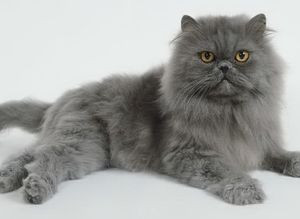 There are 3 officially recognized standards of Persian cats. Today the most common European standard, while the exotic has the most characteristic appearance and the corresponding price.
There are 3 officially recognized standards of Persian cats. Today the most common European standard, while the exotic has the most characteristic appearance and the corresponding price.
Types differ only in the shape and arrangement of the nose:
- Old English - A straight nose is located just below the eyes.
- Modern European Persian - the upper edge of the nose is at the level of the lower eyelids.
- Extreme (Persians-exotics) - the nose is cocked even higher, to the inner corner of the eye.
Otherwise, the standards are similar:
- powerful, large or medium body;
- fairly large, round head;
- small, widely set, slightly rounded ears;
- round, large and expressive eyes;
- neck is strong, from short to medium length;
- short, powerful limbs;
- short, fluffy, "mundane" tail;
- long, thick, shiny coat, reaching 20 cm in length.
Male Persians reach a weight of 7 kg, females usually 2-3 kg lighter.
Coloring
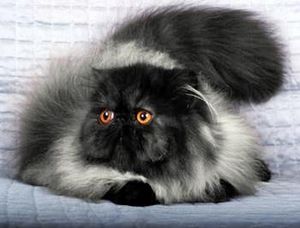 A hundred colors for one breed - this, of course, very much. Therefore, the felinologists here also rank the Persian breed - by the color of the eyes.
A hundred colors for one breed - this, of course, very much. Therefore, the felinologists here also rank the Persian breed - by the color of the eyes.
- Yellow-eyed. In turn, there are two types of color of yellow-eyed Persian cats - simple and complex. In a simple- the color of awn and undercoat is the same. Usually it is white, red, black and tortoiseshell cats. In a complex - different: the undercoat is lighter. This color is formed from smoky or tabby, for example, silver tabby - one of the most beautiful versions of the Persian fur coat.
- Green-eyed. In this group of cats there are only complex colors, for example, shaded silver or chinchilla.
- Blue-eyed. Feature of this type - in bright marks on a light background of wool, that is, all varieties of Persian cats - color-point. The colors of blue-eyed Persians are the most diverse, including tabby and silvery.
The most common Persian colors today are blue, red, tortoiseshell and white.
Character
 Persian cat - one of the most adapted for living in the family. In the wild this breed is unlikely to survive.
Persian cat - one of the most adapted for living in the family. In the wild this breed is unlikely to survive.
- She is contacting: gets along well with children, even with moody and bothersome.
- Fall in love with the owner once and for all: protects, heals and "worries" for a person.
- The Persians are incredibly in need of loveand affection, so next to the beloved owner with pleasure carry the journey and travel.
- While its owner does not exist, the Persian cat "freezes": she can not touch food and drink, not even leave one place. But when the threshold is crossed by someone from the household, the pet literally comes to life!
- This breed cares for the offspringlike no other. Moreover, the Persian cat regards the pregnancy as a "participle" of the owner: bearing the offspring, she constantly shares her experiences with you, and after the delivery she is sure that you must feed, play and lull the babies "in four hands" after giving birth.
- However, the cat is simply torn between the need to be with the beloved master and the mother's duty. Conclusion: a pregnant and lactating Persian cat needs to be surrounded with even more attention and love.
- Temperament among the Persians is different, but they are not aggressive. Persian kittens are always funny and restless, they remain so for many years if a person supports the cat's playful behavior. In any case, this breed will never "contradict" a person, calmly withstanding all tiskanye and hooting in his address.
For the "connection" to the problems of the host, a Persian cat often pays for a weak immune system.
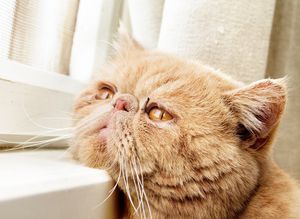 The Persians are a rather naive and curious breed. therefore need special conditions residence, such as:
The Persians are a rather naive and curious breed. therefore need special conditions residence, such as:
- take away all medicines and chemicals;
- during cooking, make sure that the pet does not jump on the stove or hot dishes;
- check the washing machine and dryer - the cat can easily fall asleep there;
- provide windows with quality grids - this breed loves to sit on the windowsill.
Wool
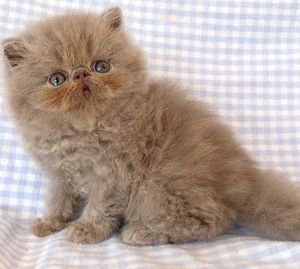 Care for the fur of a Persian cat is an art that requires special means and consistent actions.
Care for the fur of a Persian cat is an art that requires special means and consistent actions.
Combing Your Pet occurs in several stages: "walk through", then carefully comb out the middle and smooth. Frequency - every 2-3 days.
After water proceduresblot the hair with a towel and gently comb it until it dries completely, naturally in a warm room.Persian cats show a haircut, without touching the tail. But remember, you can not cut Persian colorpoints to avoid pigmentation.
Food
 What to feed a Persian cat - one of the most important issues of the content of the breed. Ideally, you need to evenly combine good food with home-made food:
What to feed a Persian cat - one of the most important issues of the content of the breed. Ideally, you need to evenly combine good food with home-made food:
- almost half the diet – proteins - (lean meat, fish, milk, soybeans);
- carbohydrates(cereals, bread, root vegetables, oat flakes);
- necessary vitamins(olives, asparagus, boiled or raw vegetables, fruits).
The main thing - do not allow in the cat's diet seasonings and spices.
The Persian can catch mice, if this instinct is awakened in a kitten from 3 to 6 months.
Diseases
 Persian is a breed of cats with pretty good health, but they have several hereditary diseases, for example:
Persian is a breed of cats with pretty good health, but they have several hereditary diseases, for example:
- polycystic kidney disease;
- blindness (manifested to 4-8 weeks, after a couple of months the animal is completely blind);
- excessive tearfulness of the eyes due to a flat muzzle (need eye care - blotting with a napkin, treatment with a special lotion);
- hypertrophic cardiomyopathy;
- also Persian cats are prone to gingivitis, formation of tartar and plaque.
The pet should be checked at the veterinarian with a periodicity of several months.
Video
Persian cats are the most charming pets:

